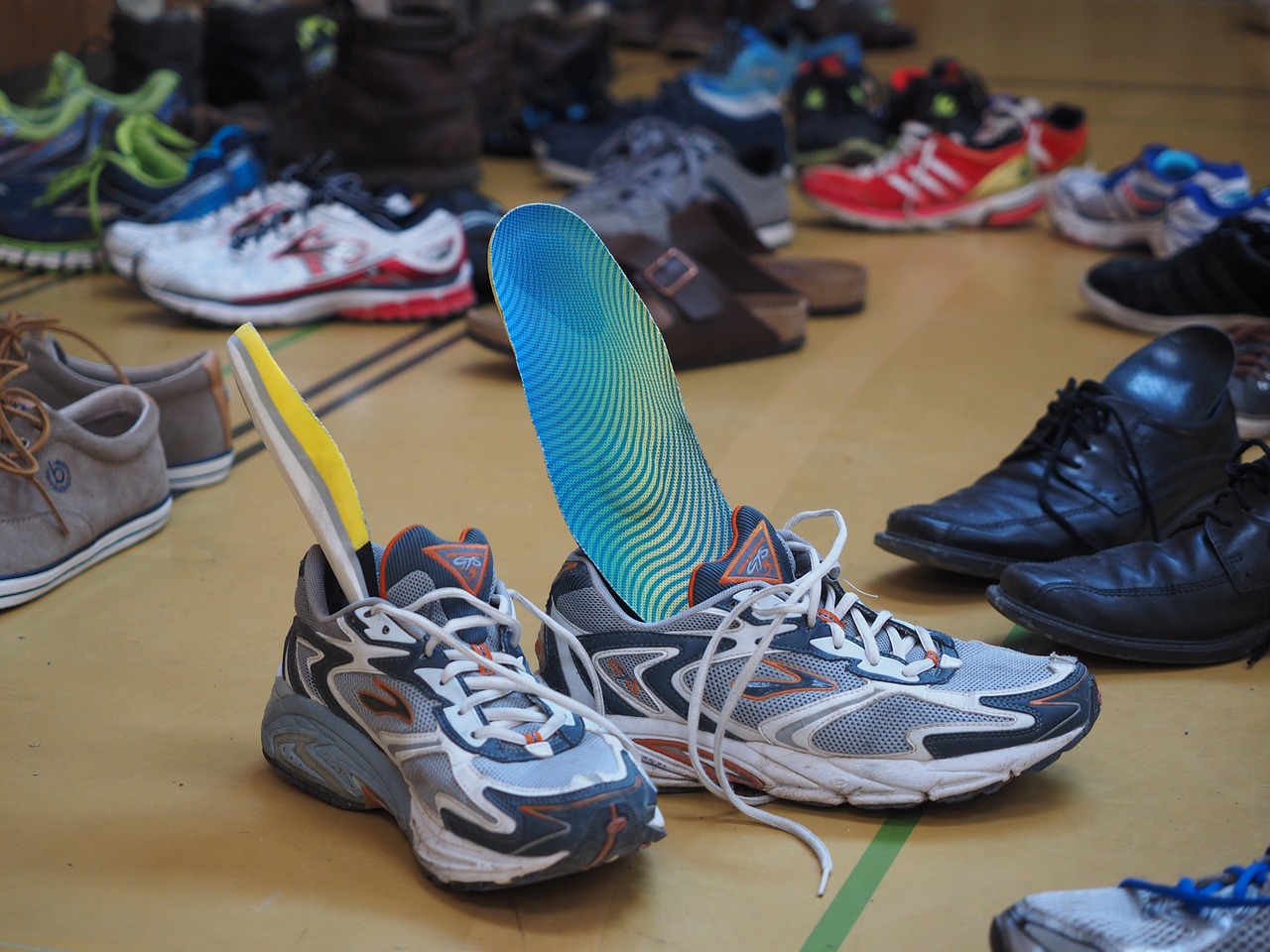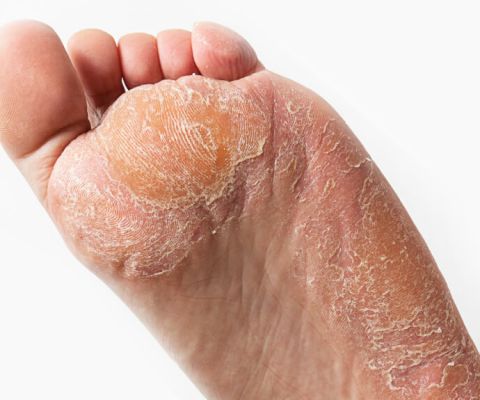How to Remedy Dry & Cracked Skin on Feet: Complete Guide
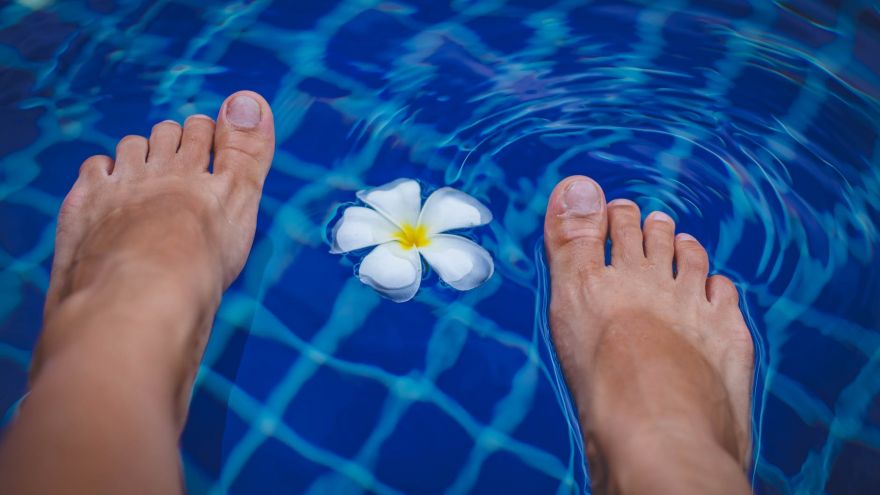 How to Remedy Dry & Cracked Skin on Feet: Complete Guide www.walkjogrun.net
How to Remedy Dry & Cracked Skin on Feet: Complete Guide www.walkjogrun.net Our bodies do a tremendous job of communicating with us. When something is wrong, you can almost bet there’s a sign or symptom manifesting somewhere – calling for us to pay attention to it. But, you have to wonder why it most often comes in the form of pain.
Everything from a cut on your finger to dry, cracked skin on your heels screams, “fix me, or it’ll get worse!” Here is an opportunity to get a head’s up on the causes and various treatments recommended for the condition called xerosis (dry skin), the most common cause of heel fissures. Commonly known as cracked heel, the first warning signs will appear in the form of thick, discolored calluses which may appear yellow to dark brown depending on your skin color. The callus is a typical occurrence resulting from continuous pressure usually from long periods of standing or walking. But, the danger doesn’t lie in the callus, it stems from the cracks in the skin that become vulnerable to infection and bleeding when the callus is left to deepen and dry out.
Dry and Cracked Skin Remedies
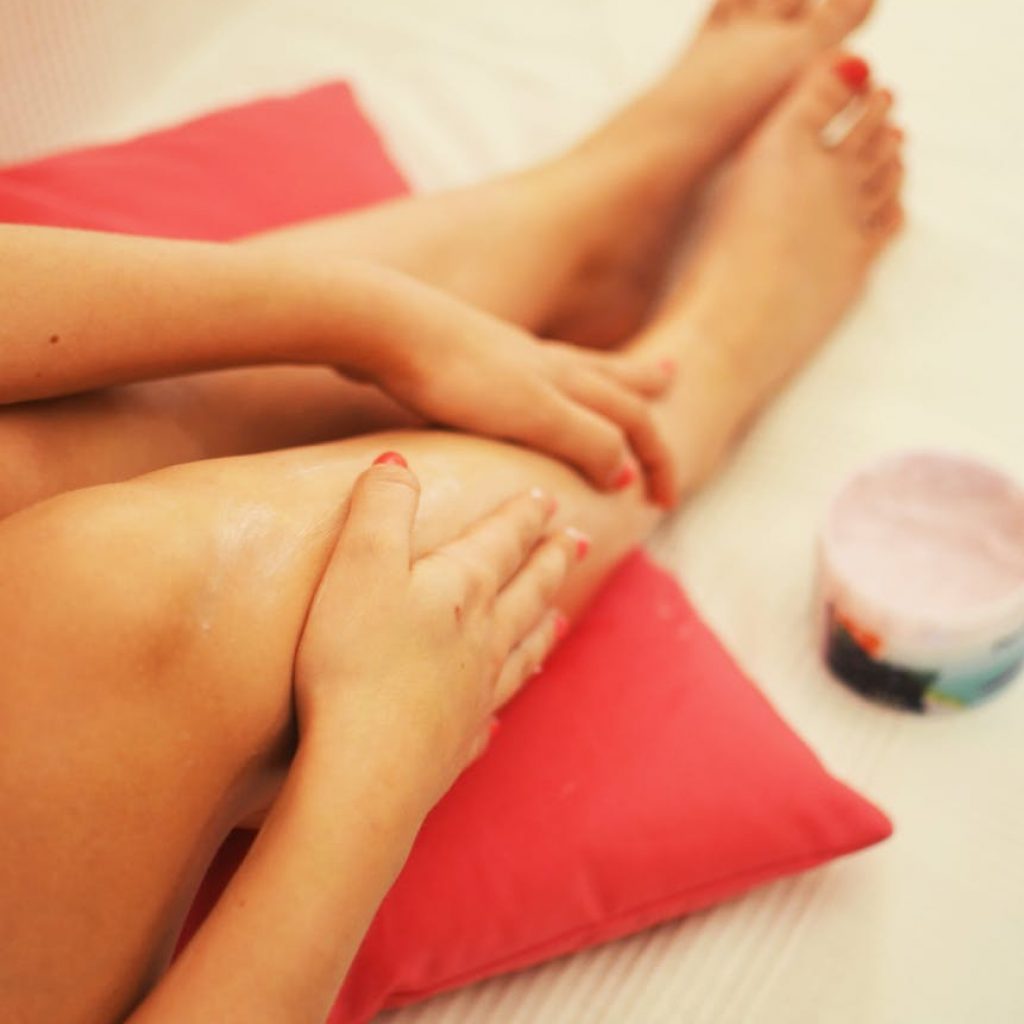
Environment Plus Vulnerability Equals…?
How can we tell the difference between seasonal dryness in our skin and the beginning of a dangerous crack in our foundation? During the cold winter months, it is very common to experience dry skin from head to toe. As human beings, we are composed primarily of water so, when the winter cold surrounds us, our bodies suffer from the lack of moisture in the air. Any medical condition or disease a person may have could certainly affect heel fissures and become painful or infected. Since we’re talking about winter, let’s start by looking at the factors that may contribute to cracked heels during this time of year:
Step #1: Main External Causes of Cracked Heels in Cold Weather
- Lack of moisture
- Weather consistently cold and dry
- Taking hot showers and baths
- Constant exposure to central heating
- Dehydration from insufficient fluid intake
Step #2: Physical Conditions that Contribute to Cracked Heels
- Diseases such as eczema, diabetes, poor circulation and conditions of the thyroid glands.
- Vitamin and Mineral Deficiencies including zinc, vitamin E, and essential Omega 3 fatty acids
- Obesity
Recommendations:
The beginning of a proper foot care plan starts in the mind. The way you think and feel about your feet is going to reflect in their overall health someday. If you know you are susceptible to dry, cracked skin in the winter months, keep extra moisturizer on hand and apply it as often as possible throughout the day. At the very least, a good foot massage before going to bed will always feel great and relaxing. Why not spend a few extra minutes with your feet giving them the care and attention they need? A small amount of lotion rubbed into the sole and heels of your feet, followed by a pair of comfortable socks will not only help prevent dryness, it will keep your feet from drying out overnight.
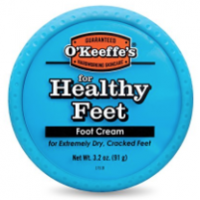
- O'Keeffes for Healthy Feet
-
Our rating - Penetrates Thick Skin
- Price: See Here

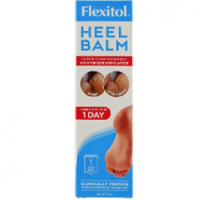
- Flexitol Heel Balm
-
Our rating - Clinically Proven
- Price: See Here

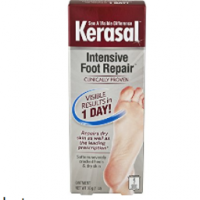
- Kerasal Intensive Repair
-
Our rating - Highly Concentrated
- Price: See Here

Natural Remedies for Treating Dry and Cracked Skin on the Feet
Keeping Skin Care Simple and Natural
No matter what health issues we face during our lifetime, it’s always a good idea to have a meeting with ourselves first to try and figure out what we can do about fixing it. When seeking treatment or therapy for our skin, a logical place to start is understanding what it is and how it works. The physiology of the skin is truly fascinating. We recognize it as the largest organ of the human body composed of three layers: The epidermis, dermis, and hypodermis all functioning together to basically keep the good stuff in and the bad stuff out. What is so interesting is the fact that the main functions of the most superficial layer of the skin (the epidermis) is to reduce water loss, protect against abrasive action and microorganisms, and shield us from our environment. Problems like dry, cracked heels arise when the skin is not properly nourished or constantly subjected to adverse conditions. So, it only makes sense to start taking the necessary steps toward optimum foot health through knowledge. Here are some helpful and very easy steps to guide you:
Step #1: Caring for Your Feet from the Outside
Pedicures twice a month. These can be done at home or professionally but must include the following procedures:
- Soaking the feet in warm, soapy water for 10-15 minutes.
- Gentle scrub with soft bristle brush or semi-rough washcloth.
- Rinse off soapy water and wash again.
- Pumice the soles and heels of each foot.
- Pat dry with clean towel, apply moisturizer.
Always wear shoes and socks in cold weather. Directly exposing the skin to extreme temperatures will cause additional dryness.
- Wear shoes and socks that fit correctly. A better fit can be obtained by buying your shoes in the evening if you’re shopping in person. Checking the vendor’s size chart online and any customer’s comments will help you when purchasing shoes online. Interrupted blood flow from wearing tight shoes or socks may cause poor circulation, foot, and muscle cramps.
- Check the materials used in manufacturing your shoes to make sure they provide adequate protection from cold weather and wet environments.
- Make some time during the day for a brief foot massage, going in-between each toe, the ankles and heels.
- Use natural or organic essential oils that do not contain harmful chemicals when massaging cracked heels. Fissures in the foot will absorb any oils or chemicals that are massaged into the skin.
Step #2: If Feet Could Talk
The dry, cracked skin on the bottom of your feet is trying to tell you something. You may not be able to hear it audibly but with one look or touch, you’ll get the gist loud and clear. Your feet are telling you that there are a number of conditions including poor eating habits that may be responsible for the dryness and cracking on your heels.
Other causes related to and causing dry skin are
- Skin damage resulting from excessive exposure to sunlight
- The aging processes
- Inherited skin disorders
- Athlete’s foot, psoriasis, eczema
Recommendations:
Proper and correct care of the feet is not just an external matter. Having healthy feet takes work. It means wearing the right size shoes with the right materials so your feet stay comfortable and protected. The feet that are cared for will be clean, massaged and pumiced where applicable and the owner of those feet will be eating the right foods and taking the right vitamins. Of all the body parts making up the human body, the feet are probably the most neglected. Maybe it’s because they get further and further away as we age or, maybe it’s because we can’t see the bottoms. In any case, we can go nowhere unless we take them, or, should I say, they take us?
How Can Vitamins Help with Dry, Cracked Heels?

You Are What You Eat – So Think of Your Feet
There are certain things our body’s need in order to be and stay healthy. We’ve all heard about the benefits of drinking 8 glasses of water a day, eating a balanced diet and getting exercise. In the same manner, the vitamins and minerals we require are not always supplied in the foods we eat. Supplementation may be vitally important for you to start in order to keep your skin from drying and cracking. Here is a list of vitamins crucial to good skin health:
Step #1: Vitamin E
Vitamin E is a very powerful and important, fat-soluble antioxidant for the body and skin. It will destroy the free radicals created by exposure to chemicals and harsh toxins. Vitamin E helps the skin stay hydrated which helps in preventing cracked heels and dry skin all over the body. The following foods are rich sources of Vitamin E:
- Liver (beef, chicken)
- Nuts and Seeds (sunflower, almonds, hazelnuts)
- Dark, leafy greens (kale, spinach, Swiss chard, turnip greens, mustard greens, collards)
- Avocados
- Squash and Pumpkin (butternut squash)
- Fruits (Kiwi, blackberries, mangos, apricots, mulberries, mamey sapote, guavas, peaches, nectarines, raspberries)
- Broccoli
- Fish (trout, swordfish, herring, smoked salmon, salmon, mackerel, cod)
- Plant oils (olive oil, wheat germ, sunflower, grapeseed, canola, corn)
- Shellfish (shrimp, oysters, crayfish)
Step #2: Vitamin A
Vitamin A is a fat-soluble antioxidant vitally important for eye, skin and oil gland health. Foods rich in Vitamin A are:
- Sweet potato (cooked, frozen, canned, raw)
- Carrots (cooked, frozen, raw)
- Dark leafy greens (kale, spinach, collards, turnip greens, beet greens, swiss chard, pak/bok choi)
- Squash (butternut, Hubbard, pumpkin, winter-all varieties)
- Lettuces (cos, romaine, green leaf, red leaf, butterhead, chicory)
- Dried fruit (apricots, prunes, peaches)
- Melons (cantaloupe)
- Peppers (sweet red, sweet green, sweet yellow)
- Fish (tuna, sturgeon, mackerel, oysters)
- Tropical fruits (mango, papaya)
Step #3: Vitamin C
Vitamin C is the water-soluble vitamin that plays an important role in the production of collagen which is what the skin, ligaments, and tendons need to stay healthy. One-fourth of the human body is made of collagen (the primary component of the connective tissue) including the skin, muscles, and tendons.
A Vitamin C deficiency could result in the skin on the feet and heels being dry and cracked from fissures. Vitamin C also supports and strengthens the capillaries which transport blood to the skin. A diet rich in Vitamin C will include foods such as:
- Guavas
- Bell peppers
- Kiwifruit
- Strawberries
- Oranges (pomelo, grapefruit, lemon, clementine)
- Papaya (mango, pineapple, cantaloupe melon, honeydew melon)
- Brassica Vegetables (broccoli, Brussel sprouts, green cauliflower, cauliflower, red cabbage, cabbage)
- Tomatoes
- Snow Peas
- Dark, leafy greens (kale, turnip greens, Swiss chard, spinach)
Recommendations:
A vitamin and or/mineral deficiency will take a serious toll on your skin disrupting the natural balance of moisture and skin oil. We’re constantly being told to drink water-but why? The answer is, our entire body depends on water to keep our blood moving because the blood that is circulating is delivering nutrition. Shopping for vitamins and minerals is easier than ever, but it’s a good idea to check where and how your supplements are made. You definitely want to consult a medical professional, maybe have some bloodwork done before spending a lot of money on vitamins you “think” you need. The sciences involved in determining deficiencies and the nutrients needed for optimum health are astounding-why not take advantage of all the brainpower that’s worked so hard at keeping you healthy. Most of all, know that too much of a good thing can be very bad for you. Here are a few examples of the toxic effects over-supplementation can have on the body: Too much Vitamin A can result in liver damage. Too much Vitamin D can stunt growth in children and cause kidney stones, and too much vitamin E can cause excessive bleeding. Take the time to talk to a professional, get the necessary blood work and remember-don’t overdo it!
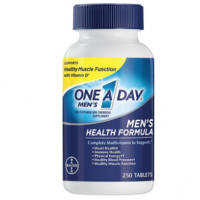
- One A Day Multivitamin
-
Our rating - Supports Heart Health
- Price: See Here

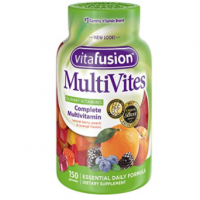
- Vitafusion Multivitamin
-
Our rating - Gummy Chewable
- Price: See Here

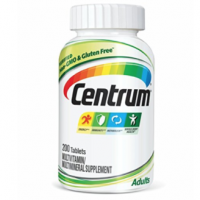
- Centrum Multivitamin
-
Our rating - Non GMO
- Price: See Here

Cracked Heels and Heel Fissures
What Can A Doctor Do for You?
People with diabetes or immune system diseases such as cancer or HIV are advised to seek foot treatments from a medical professional such as a podiatrist. Certain health conditions slow down natural healing time and increase the chances of hemorrhage due to excessive bleeding. A podiatrist can reduce the calluses on the heel with a sharp blade and “sand down” the fissures much more effectively and a lot safer. If you are experiencing pain or discomfort from cracked heels, look through the following steps and feel free to discuss these options with your doctor as well as prevention advice:
Step #1: Treatment Options for Cracked Heel Skin
- Liquid bandages designed to hold the cracked skin together to promote healing of the fissure.
- Reduction by trimming the callused skin.
- Prescription softening agents
- Custom fitted orthotics
- Heel pads to cushion and stabilize
Step #2: The Best Medicine is Still Prevention
Any noticeable thickening or callus on the heel of the foot may form fissures if left unattended. If you do nothing else, apply moisturizers or essential oils to start the softening process. Sleep with socks on and pumice once or twice a week.
- Check online or at your local pharmacy for heel softeners or heel protectors which are worn like low-cut socks. They contain a gel-like substance in the heel area which is designed to soften the heels during sleep.
- Loofah sponges will help to exfoliate the cracked heel skin but do not rub or scour the area. A gentle circular motion is recommended followed by applying lotion.
- Persons with diabetes or immune deficiency should never treat their own feet with sharp objects or use extreme pressure which may cause bleeding due to possible neuropathy.
Recommendations:
Remember, many skin conditions occur during certain weather conditions and especially when it is cold outside. In the event your dry, cracked heels do not duly depart, it may be time to consult a physician. The last thing you want to do is ignore the problem, allow fissures to develop and let bacteria invade your foot. Use the lotions, socks, oils, and pads, but if you don’t get relief or, you notice the cracks in your feet have deepened, there could be a much bigger problem to deal with.
Top Home Remedies for Dry, Cracked Heels

Most Ingredients are in Your Cupboard Right Now!
It’s a wonderful feeling to know that right now, there are ingredients in your cupboard you can easily mix together that will ease pain and promote healing in every part of your body. Why not take a quick look at these home remedies that have worked for so many others who have suffered from the same problems as you?
Step #1: Glycerin and Rosewater Remedy
Glycerin is referred to as one of the top moisturizers anywhere. When combined with rosewater, it helps smooth and softens heels without cracks.
- ¼ part Glycerin
- ¾ part Rosewater
- Fresh squeezed lemon juice – about half a lemon
- Enough warm water – to cover and soak your feet
- Salt – 1 tsp
- Pumice stone
- Mix glycerin with rosewater
- Add and stir in the fresh lemon juice
- Add the salt to the warm water, mix together and soak your feet in it
- Soak both feet for 15-20 minutes
- Add 2 tablespoons lime juice to water to loosen dead skin cells
- Rub with a pumice stone to exfoliate dead skin cells
- Pat dry and apply the glycerin and rosewater mixture
For best results, do this treatment at night and cover with socks before going to bed. When both heels have had ample time to heal, follow-up with regular applications of the glycerin and rosewater lotion. It should help you from having any more bouts with dry and cracked heel skin.
Step #2: Curing the Cracked Heel with Natural Oils
Natural and oils are very highly regarded as some of the best moisturizers for the entire body as well as the feet. This recipe calls for any combination in any quantity you desire of the following oils:
- Almond
- Grape-seed
- Olive
- Sesame
- Coconut
- Mix together one or more of the above oils
- Apply to clean, damp feet (after patting dry)
- Massage in the oil mixture
- Put socks on and go to bed
- Repeat as necessary until cracks are gone
- Keep oil mixtures on hand to prevent further cracks
Step #3: Fruit Masks for Treating Cracked Heels
Some of the wonderful, healing properties contained inside fruit come from their enzymes. By combining certain fruits together, we can come up with an amazing mask to slather all over our feet while having a nice healthy snack at the same time!
- Combine 1 whole banana with
- One-half avocado (yep-it’s a fruit) and mix with
- Flesh from one-half coconut
- Mix until a paste is formed
- Apply fruit mixture to cracked heels
- Leave on for 15-20 minutes
- Wash mask off and discard fruit
- Repeat daily until desired results are attained.
Note: It’s okay to substitute papaya for the banana or simply mash a banana and papaya together for small cracks.
Step #4: Milk, Orange Juice and Honey Exfoliate for Dry, Cracked Heel Skin
By establishing an exfoliating routine once per week, you’ll be able to keep your feet smooth and free of dead skin. You’ll also be able to feel and treat any new cracks that may occur immediately.
- Honey is a humectant, which means it has the properties that will trap and seal in moisture which makes it the perfect mixture to treat dry, cracked heels. By putting it on your feet you’re actually restoring moisture to your skin. It also has antibacterial properties which will work great inside the deeper cracks in your skin.
- One of the main ingredients in milk is vitamin A which helps repair, rebuild and keep skin healthy. Using milk also makes the mixing go a little smoother so the application will be easier.
- Orange juice is high in vitamin C. Vitamin C enhances the production of collagen, which is essentially the substance that gives skin its elasticity. Collagen lessens with age, which is the reason we get wrinkles. Applying vitamin C as an exfoliate will help your skin retain its flexibility as well as helping your cracked skin to heal.
- 1 cup warm organic honey
- 1-2 tablespoons whole milk
- Juice of ½ to 1 orange
Mix together while warm and spread evenly over and on the soles of both feet.
You may want to use a pumice stone or foot file to remove some of the dry, callused skin before application of the mixture onto your heels.
Recommendations:
Since dry skin and heel fissures do not disappear overnight, try to make enough of your mixture to last a week or two. Most mixtures will keep up to a month if stored in the fridge. If you’re storing honey, you can set it in a bowl of warm water before using to loosen it up.
Conclusion:
There are hundreds of ideas and home remedies for helping our bodies heal – and many of them are still around because they work. You may be able to help yourself to a wonderful jar of heel smoothing, crack mending elixir just by going shopping in your own pantry. Will wonders ever cease?
Sources
- https://sciencebasedmedicine.org/collagen-an-implausible
- https://ods.od.nih.gov/factsheets/VitaminA-HealthProfessional/ Strengthening Knowledge and Understanding of Dietary Supplements
- http://www.lexingtonkypodiatry.com/specialties/skin-conditions/cracked-heels-and-heel-fissures/
- https://howshealth.com/cracked-heels-fissures/ blog
- http://www.wintercount.org/articles/5/cracked-heels-a-common-winter-skin-problem Winter Skin Care Tips
- https://www.ncbi.nlm.nih.gov/books/NBK144027/
- https://www.livestrong.com/article/487360-vitamins-for-cracked-feet-and-heels/ Vitamins for Cracked Feet and Heels by KATHRYN MEININGER July 18, 2017 blog
- https://www.myfooddata.com/articles/vitamin-e-foods.php Top 10 Foods Highest in Vitamin E article
- http://everydayroots.com/honey-foot-cream










